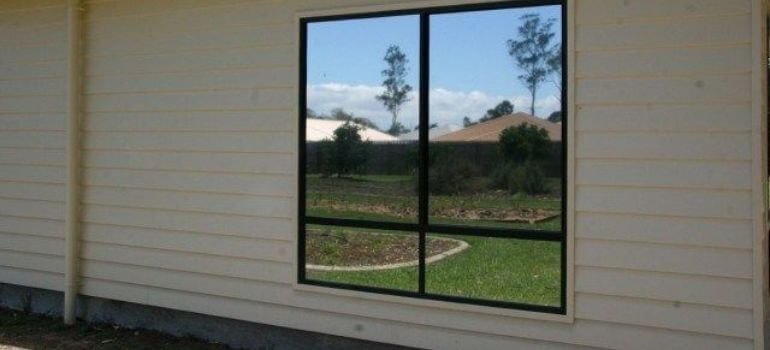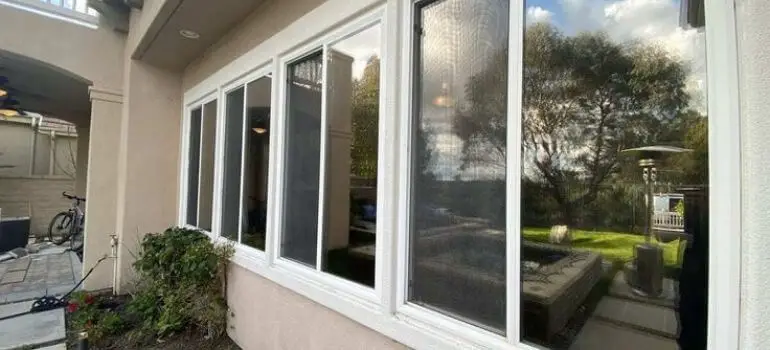A 20% window tint allows 20% light to pass through, while a 35% tint permits 35% light entry. The lower the percentage, the darker the tint.
Exploring the world of vehicle customization, window tinting stands out as a popular choice among car enthusiasts. Choosing the right level of tint for your car windows impacts not only the aesthetics but also privacy and UV protection. When selecting between 20% and 35% window tints, consider both visibility and local tinting laws.
A 20% tint is quite dark, making it a favorite for a sleek look and enhanced privacy. On the other hand, a 35% tint offers a balance between clarity and concealment, suitable for drivers who prefer a slight reduction in sunlight without compromising on visibility. Car owners must ensure their tinting choice complies with regional regulations to avoid legal issues. With safety and style in mind, picking the right shade of window tint can significantly enhance your driving experience.
What Is 20 Window Tint?

Tinting your car windows is not only about enhancing its aesthetic appeal but also about augmenting comfort, privacy, and protection from the sun’s rays. Among different tint levels, the 20 window tint is a popular choice for drivers seeking a darker shade. This particular tint percentage refers to the amount of light passing through the window, known as Visible Light Transmission (VLT), providing an optimal balance between visibility and shade.
Definition And Specifications
The 20 window tint has a specific meaning in the realm of automotive tinting. It allows 20% of the exterior light to pass through the car’s windows. This level of tint is considered relatively dark and is one of the many options available for drivers who prefer a sleek look combined with significant privacy and sun protection.
| Specification | Description |
|---|---|
| Visible Light Transmission (VLT) | 20% |
| Shade | Dark |
| UV Rays Blocking | Up to 99% |
| Glare Reduction | Significant |
| Privacy Level | High |
Depends on the specific tint product used.
Benefits And Drawbacks
- Enhanced Privacy: A 20 window tint obscures the car’s interior from outside viewers, providing an increased level of privacy.
- UV Protection: Majority of 20 tints come with strong UV filtering capabilities protecting passengers and the interior from harmful rays.
- Temperature Control: This tint level can help in maintaining cooler temperatures by blocking out a significant amount of solar heat.
- Reduces Glare: The darker tint reduces glare from direct sunlight and headlights for safer driving.
However, there are also potential drawbacks:
- May reduce visibility, particularly for night driving or in low-light conditions.
- May be illegal in some regions due to its darkness (will discuss in next section).
- Can be more challenging to install due to the darker material.
Legal Restrictions And Considerations
When opting for a 20 window tint, it’s crucial to familiarize yourself with local tint laws. Tint regulations vary by state or country, and exceeding the legal VLT limit can result in penalties:
More rows can be added for different regions
| Region | Legal VLT Limit |
|---|---|
| California, USA | Front side windows must allow more than 70% of light in. |
| Florida, USA | Front side windows must allow more than 28% of light in. |
Always ensure adherence to these regulations to avoid fines and ensure safety on the road. It’s recommended to consult with a professional installer for advice tailored to your location.
What Is 35 Window Tint?
When it pertains to automotive customization, window tinting emerges as a popular choice for enhancing both the appearance and function of your vehicle. Among the spectrum of options, the 35 window tint stands out as a preferred alternative, offering a blend of privacy, protection, and aesthetic value.
Definition And Specifications
Window tints are quantified by the percentage of light that can pass through them, commonly known as the Visible Light Transmission (VLT) percentage. A 35 window tint allows 35% of the outside light to permeate, striking a balance between brightness and shade. Specifications for the 35 window tint include:
- VLT Percentage: 35%
- Glare Reduction: Significant, providing comfort to the eyes
- UV Ray Blockage: Up to 99% protection against harmful ultraviolet rays
- Heat Rejection: Moderate, enhancing the vehicle’s interior climate control
- Privacy Level: Medium, offering a clearer view from inside while still restricting outside visibility
Benefits And Drawbacks
Choosing a 35 window tint comes with its own set of advantages and disadvantages. Let’s delve into the primary factors:
Benefits:
- Improved comfort due to reduced glare and heat gain
- Enhanced privacy without compromising on safety
- Protection against UV rays, safeguarding passengers and the vehicle’s interior
- Aesthetically pleasing, offering a sleek look that complements most vehicles
Drawbacks:
- Potential visibility issues in darker conditions
- Impediments in adhering to varied legal restrictions across different regions
- Can be considered too light for those seeking maximum privacy and solar control
Legal Restrictions And Considerations
Owing to safety and law enforcement concerns, the degree to which windows can be tinted is regulated. The 35 window tint often aligns with legal standards in many regions, but specific laws vary. For instance:
| State/Country | Front Window Tint Limit | Rear Window Tint Limit |
|---|---|---|
| California | 70% | Any darkness can be used |
| Texas | 25% | Any darkness can be used |
| New York | 70% | Any darkness can be used with certain restrictions |
Before installation, it is imperative to consult the specific legal guidelines of your area to avoid penalties. This consideration ensures compliance and sustained enjoyment of the benefits of 35 window tint without legal infractions.
Comparison: 20 Vs 35 Window Tint
Choosing the right window tint for your vehicle involves balancing aesthetics, protection, and safety. In the world of auto tinting, numbers like 20 and 35 refer to the percentage of light that a tint film allows to pass through. This guide will delve into a comprehensive comparison between 20% and 35% window tint options, helping you decide which tint level best suits your needs.
Appearance And Aesthetics
The visual appeal of your car is significantly impacted by the window tint you choose. A 20% tint—often known as “factory tint”—provides a sleek and private appearance. It permits only 20% of outside light to penetrate, creating a darker look that has become synonymous with a more luxurious and mysterious profile. On the other hand, a 35% tint is slightly lighter, allowing for more natural light and lending an elegant yet less aggressive touch to the car’s exterior.
Heat And Uv Protection
Window tints are not just for looks; they’re also about comfort and health. The darker the tint, the more heat and UV radiation is blocked. A 20% tint is highly effective in reducing the overall temperature inside your car, making for a cooler ride on sunny days. In comparison, a 35% tint offers a good level of protection and can effectively filter out harmful UV rays but might not be as efficient in maintaining a lower internal temperature.
Visibility And Safety
When it comes to driving safety, visibility is key. 35% window tints offer a balanced compromise between privacy and visibility, especially at night or in poor lighting conditions. 20% tints, with their darker shade, can reduce visibility for the driver, potentially making it harder to see obstacles or other vehicles, especially in dim environments. It’s vital to consider the impact on nighttime driving and local tinting laws to ensure safety is not compromised.
Price And Availability
As for installation, both 20% and 35% window tints are widely available and similarly priced in most auto shops. However, costs can vary depending on the quality of the material and the reputation of the tinting service. Generally, the investment reflects a balance between durability, warranty, and performance. Regardless of whether you choose 20% or 35%, ensuring professional installation is crucial for long-lasting and effective results.
Frequently Asked Questions On 20 Window Tint Vs 35
Should I Do 35% Or 20% Tint?
Choosing between 35% or 20% tint depends on your preference for privacy and local tinting laws. A 35% tint allows more visibility, while 20% offers greater privacy yet reduces visibility, especially at night. Always check state regulations to ensure your tint choice is legal.
Is 20% Tint Too Dark?
Yes, 20% tint is quite dark and can significantly reduce visibility, particularly for night-time driving. It may also exceed legal limits in some regions, so verify local laws before application.
Is 35 Tint Hard To See At Night?
A 35% tint can slightly impair night-time visibility, but most drivers find it manageable. It mildly reduces light transmission, necessitating a brief adjustment period for clear night driving.
How Do Cops Know If Your Tint Is Too Dark?
Cops use tint meters to measure window transparency. The tool gauges light penetration, ensuring compliance with legal tint limits.
Conclusion
Deciding between a 20% and 35% window tint hinges on personal preference and legal limits. Both tints offer enhanced privacy and UV protection, while also giving your vehicle a sleek look. Remember to consider visibility and compliance with local laws.
Make the choice that best suits your style and safety requirements. Your perfect tint awaits.




